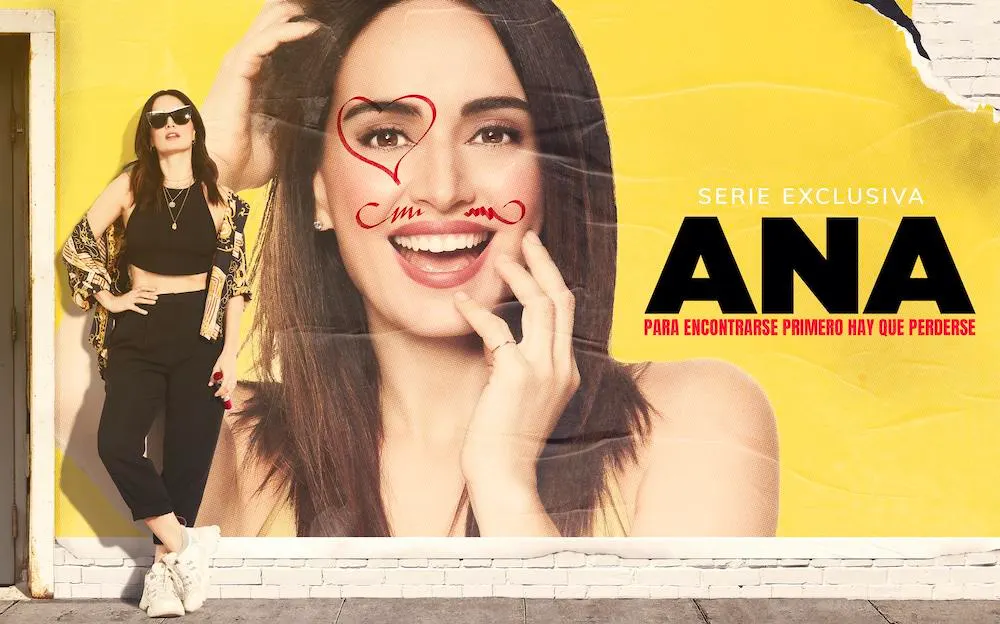More people need to be discussing the triumph that is Ana. There’s something vibrant and whimsical about a Latina take on “slice of life TV,” and Ana de la Reguera is a trailblazer as she wrote, directed, and portrayed herself in a LATAM Comedy Central original series (2020-2023), now available in the US on ViX. The show is based on her own life as a former Mexican Telenovela actress trying to make it in Hollywood. Ana successfully captures the essence of a universal coming-of-age story, even with a protagonist who is middle-aged!
From the opening line, “My mom always told me that when a woman turns 40, she becomes invisible,” the show makes its message clear. Life doesn’t end at 40, it begins again. As such, Ana takes on the internal and external realities of ageism, as we watch Ana refuse to settle for less in her career, love, and free time. While the main character often suffers from Peter-Pan syndrome, I was delighted at how this show tackles these and other -isms with a spirit of curiosity and intoxicating joy.
The show is also consistent in exemplifying the ripeness of artistic potential. While painful moments reveal that Ana may feel lost, she navigates the world with all the breadth and confidence of an artist with decades of experience. Embodying the rebellious spirit of Gen X, she navigates the largely millennial landscape of social media, wellness, and even the intersections of disability and sexuality with an open mind. The show is full of hope for artists of all ages as they look for love, strive for personal success, and wade through the messiness that is the intersection of love and art.
For a seasoned professional like Ana de la Reguera to demystify the apparent glamor of Hollywood is just what the doctor ordered in entertainment’s current climate. For us to think critically about the media, there must be a conversation about the conditions in which it is produced. Contracts, competition, and constipation aren’t dazzling realities of a telenovela star trying to make it in Hollywood but Ana’s commitment to her own character, a meta-version of herself, manages these with a presence that is larger than life.
The show also reckons with the specific challenges Latinas face in the industry early in the season when Ana auditions for the role of a Veracruzana woman running from the cartel. Being from Veracruz herself, she tries to tell the story more responsibly. Dressed in a hyper-feminine style, she opts to change her look at the last minute, building a backstory that adds depth to the character via a trucker hat to look more boy-ish and an earth-toned Guayabera her “dad gave her before she had to flee.” Despite appreciating her great monologue, the casting directors ask her to be “spicier,” saying they’re looking for real Latinas. This exchange demonstrates why representation matters behind the screen, from casting directors to screenwriters, something this show is deeply familiar with.
The show is also smart in its portrayal of Mexico City. Half of the show is filmed there, further showing how the people involved behind the scenes in telling this story made smart decisions. Ana splits her time between CDMX and LA with stylish homes and bookings in both (goals, anyone?). More swift than Ana’s flux between the two cities is the unapologetic alteration of English and Spanish. This show’s authentic portrayal of the multiplicities within Spanglish – from our Veracruzan protagonist to the Mexico City influencer “LatinTuber” to her Chicano boo-thing “Papasito” – is therapeutic for anyone who resonates with, “Ni de aqui, ni de alla.”
And when I get to the end of an episode, I have to confess… I like to watch the credits a lot! The nostalgic theme song plays as credits roll to the right of bloopers and behind-the-scenes-style clips reminiscent of a different era in television. In the Season 3 finale, Ana even brings her own mother to react to the final episode. They laugh at a clip of Ana telling her mom how to act before they go inside somewhere and awkwardly reenact a moment where their family spills real chisme. I think these bonuses demonstrate an incredible effort to humanize this story, where Ana is often breaking generational curses through the healing power of vulnerability. Even the episode titles, playing on her name, Veracruz-ANA, Herm-ANA, Lesbi-ANA, Veter-ANA demonstrate this series’ intentions of depicting a universal experience, even with its very specific ANA-ness. After all, why should white men be the only ones telling stories meant for everyone?
I do wonder how executives reacted to a Latina actress in her 40s proposing to write her own story knowing she’d be funny, sexy, and unnervingly authentic. I’m glad they greenlit it and now I’m encouraging you to watch.

